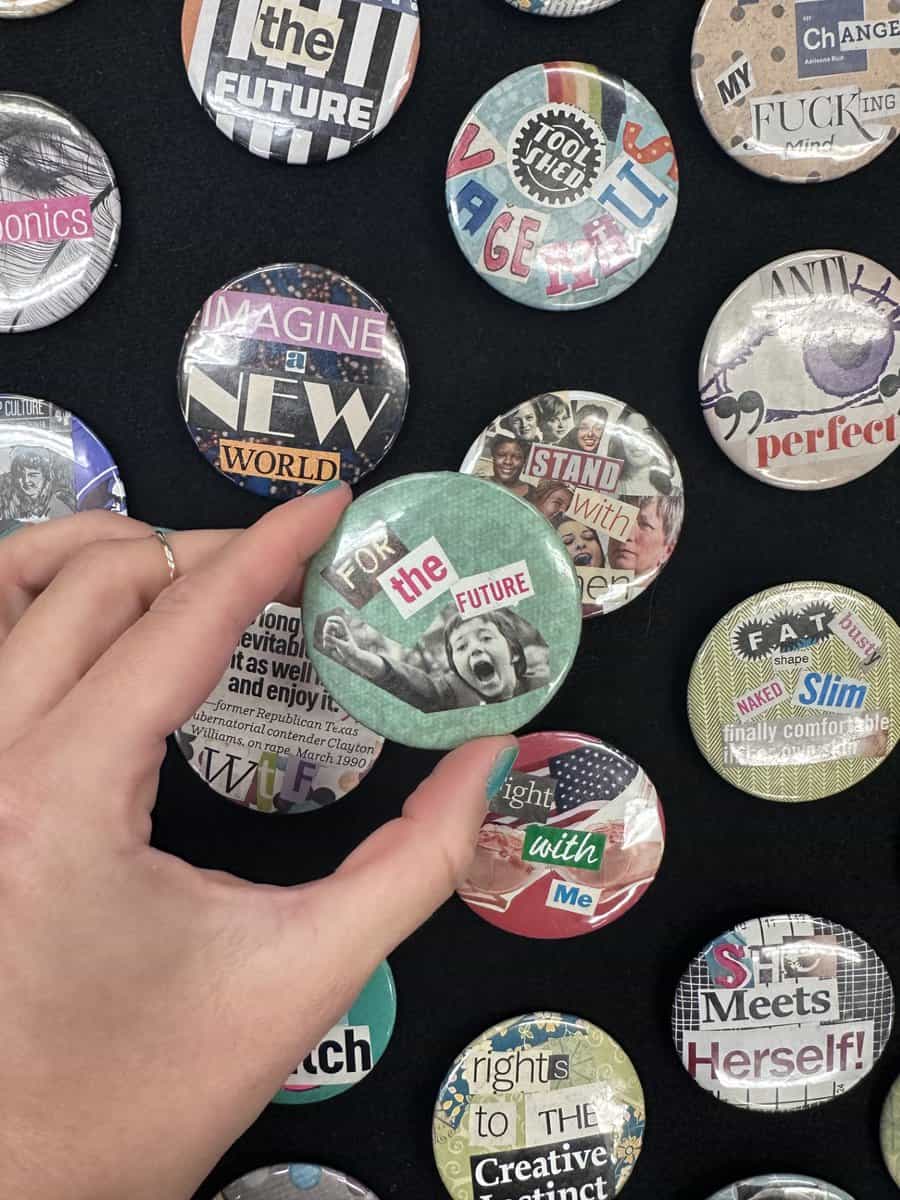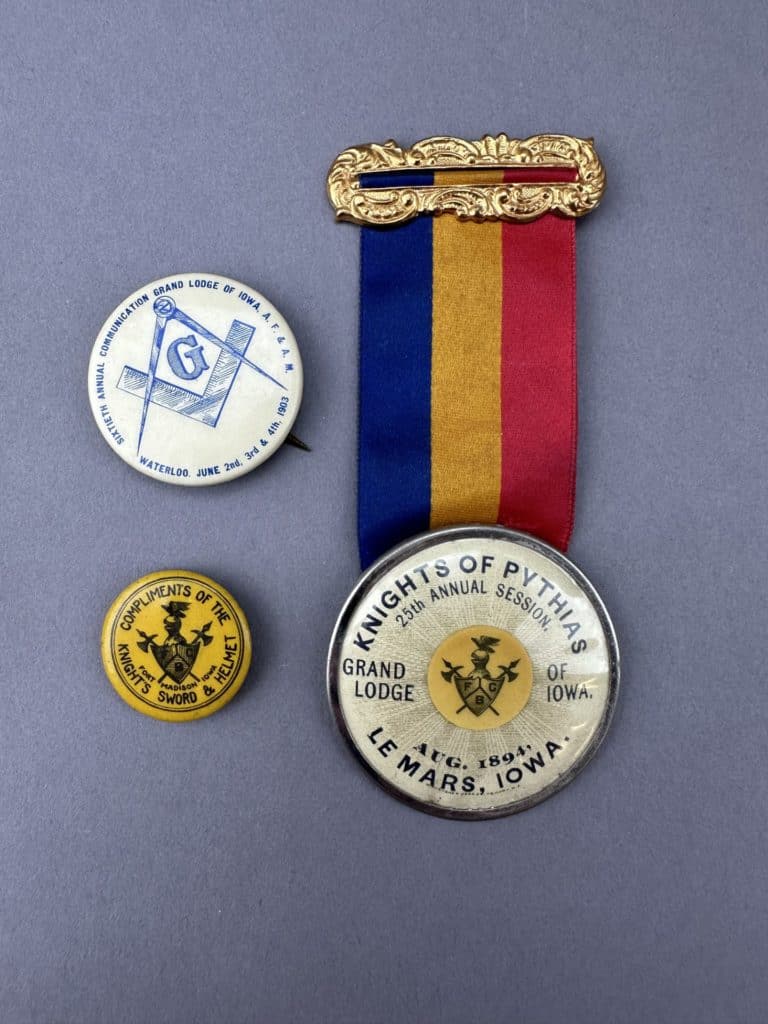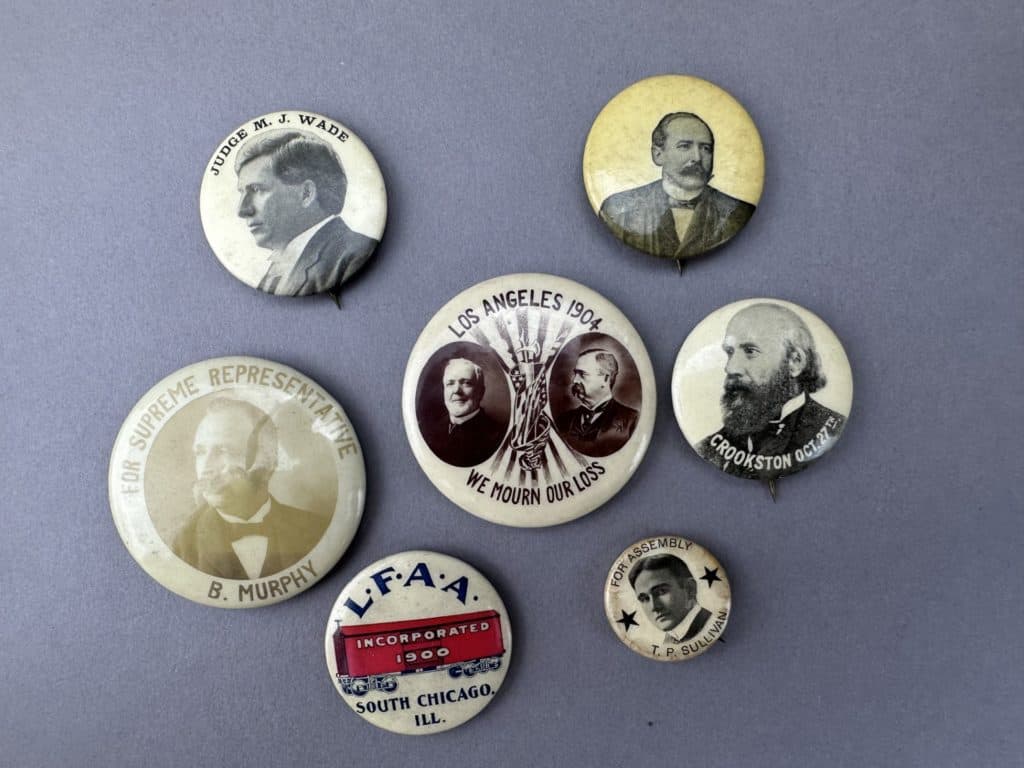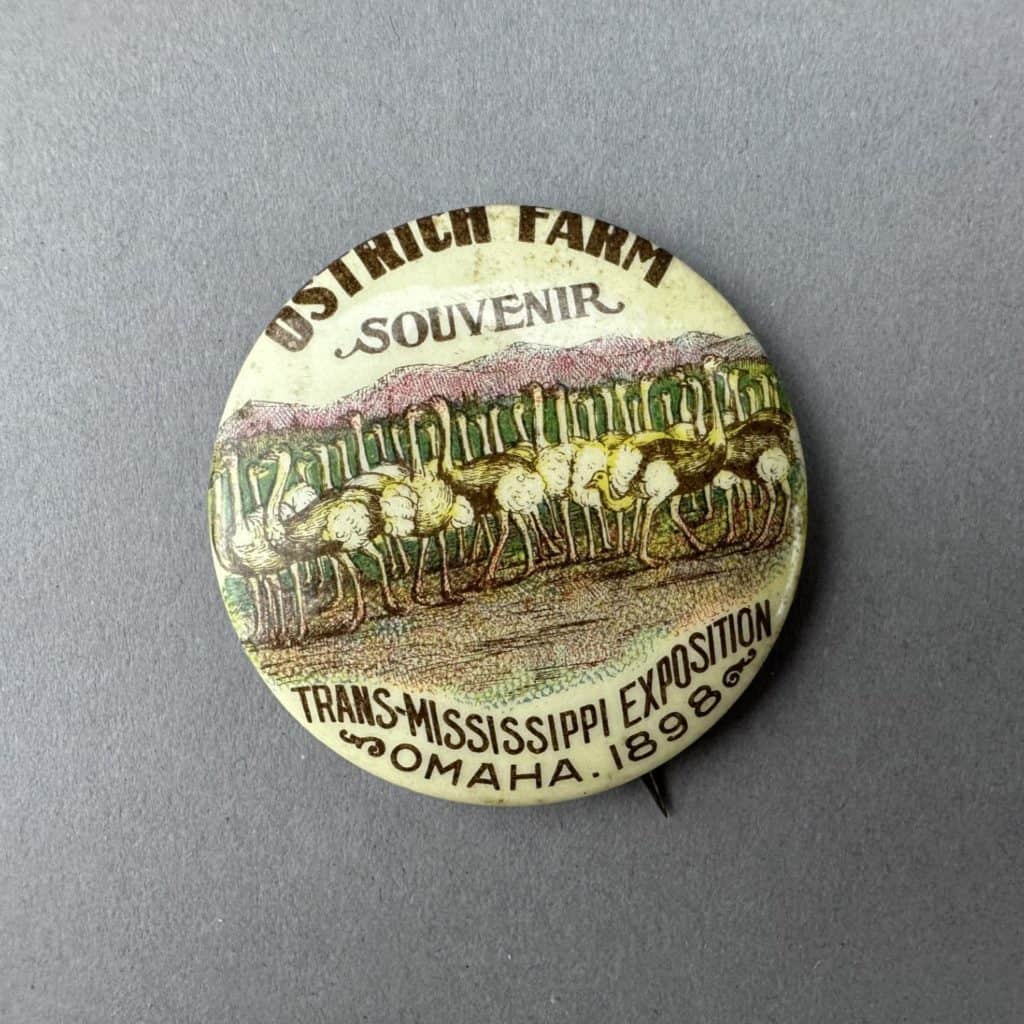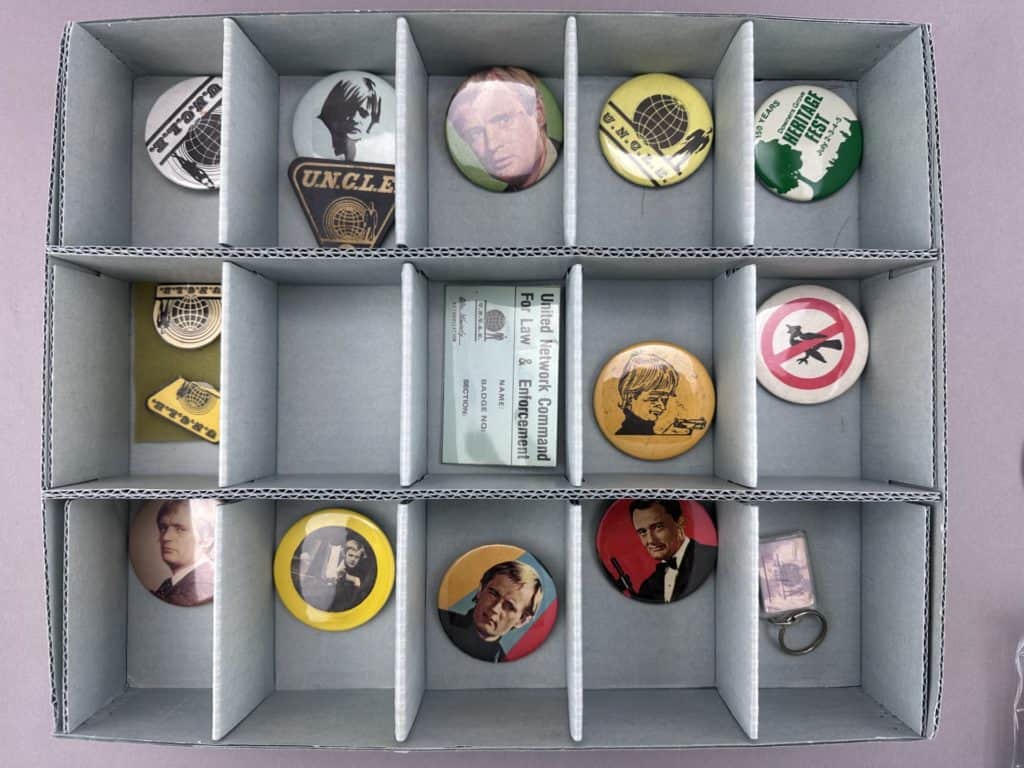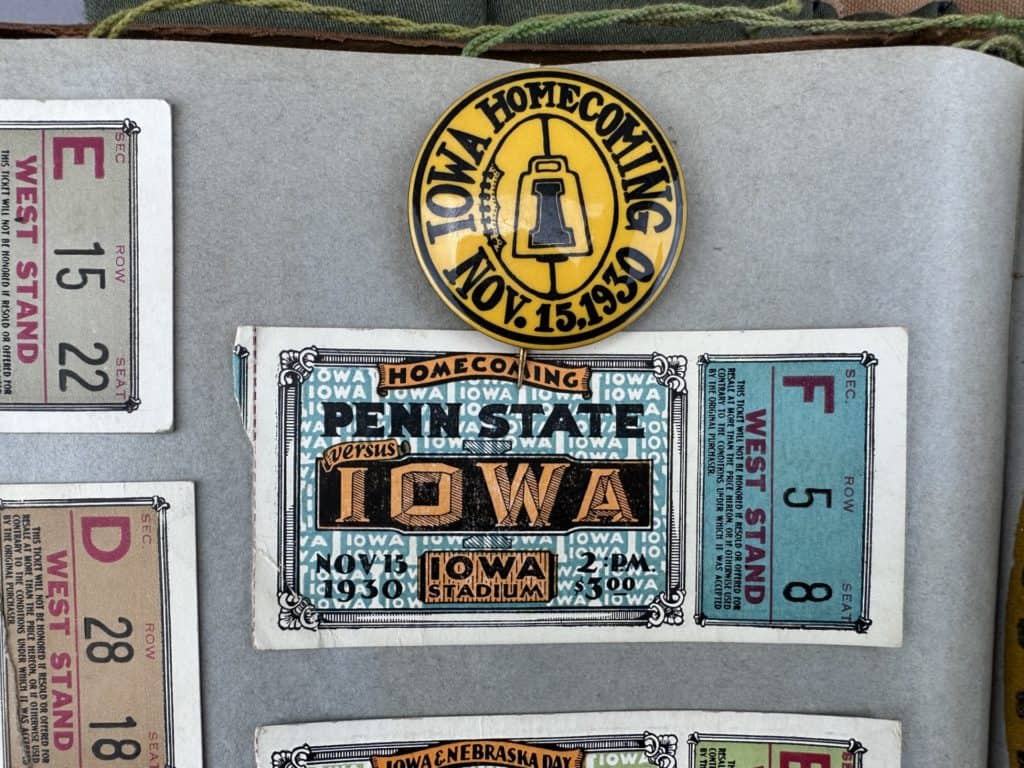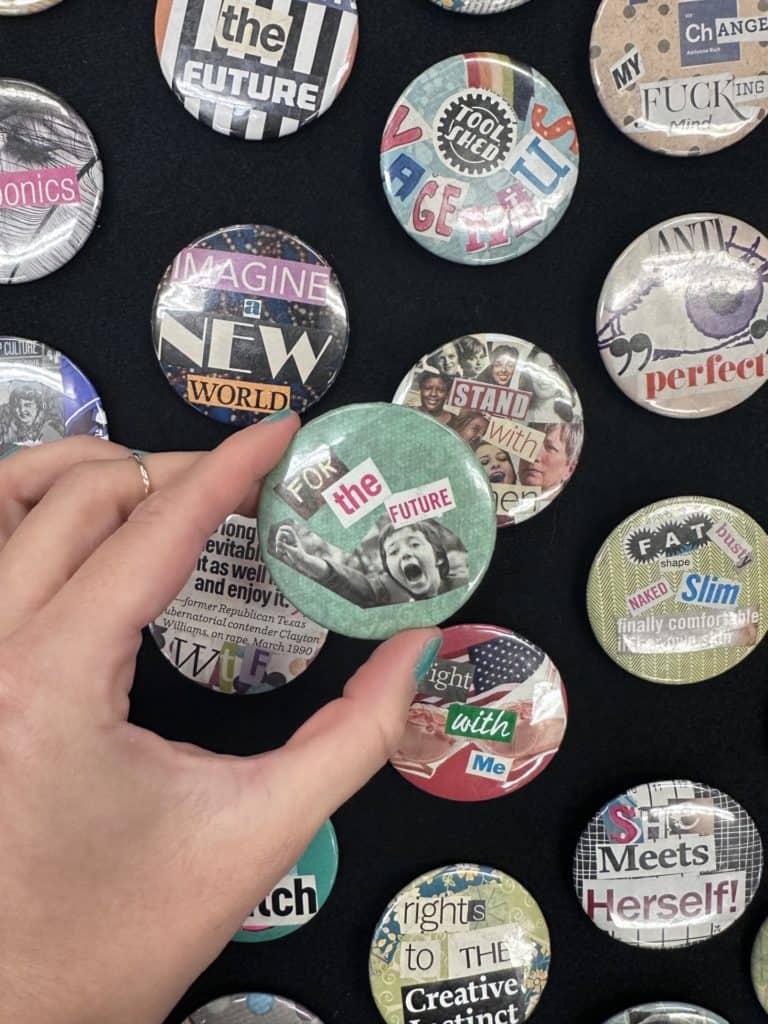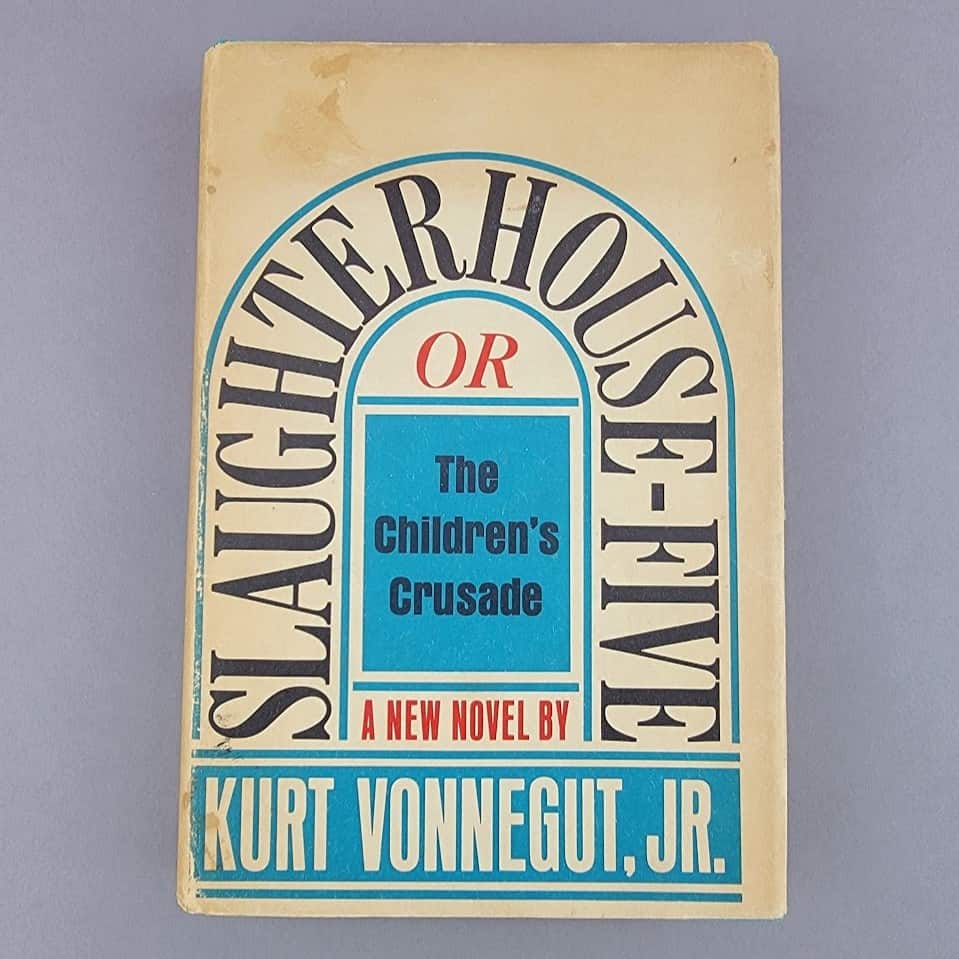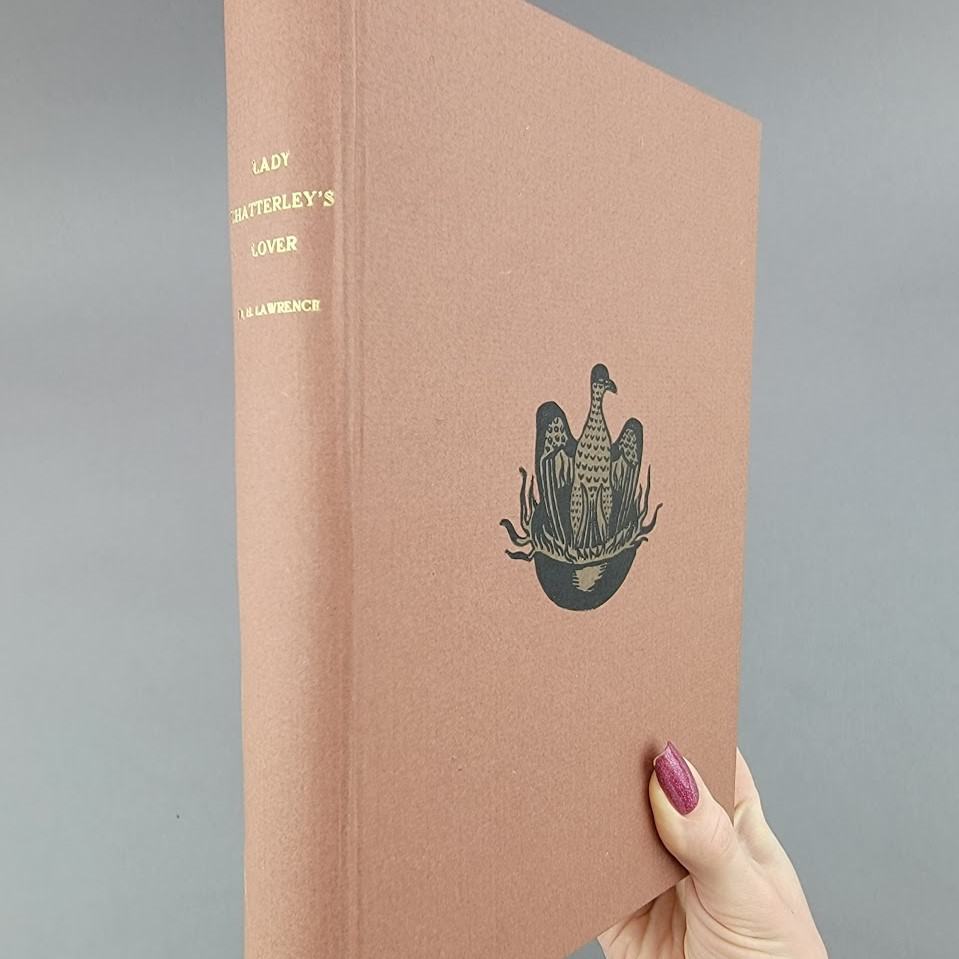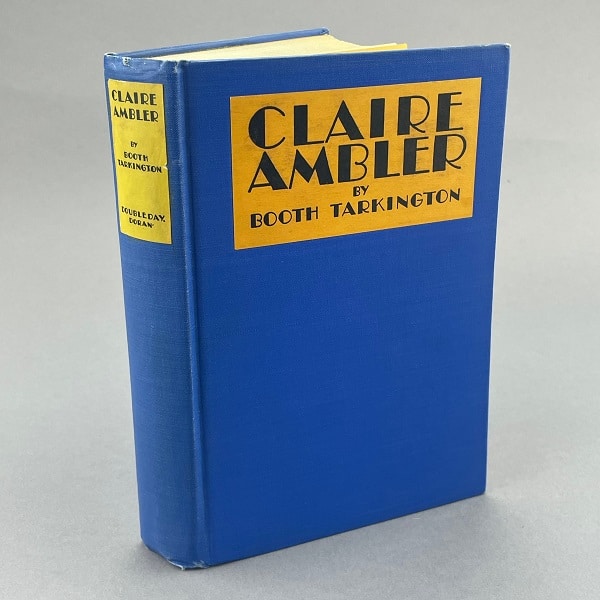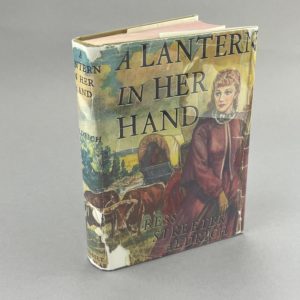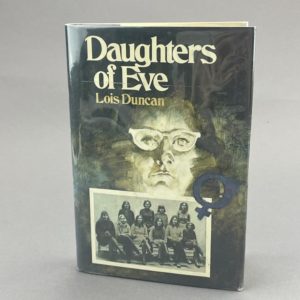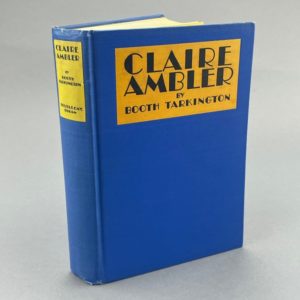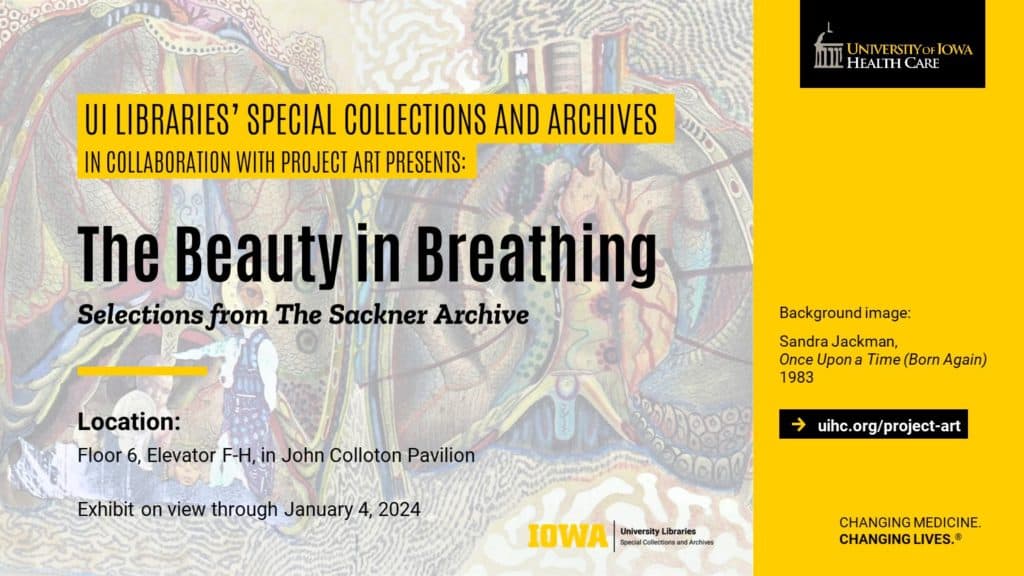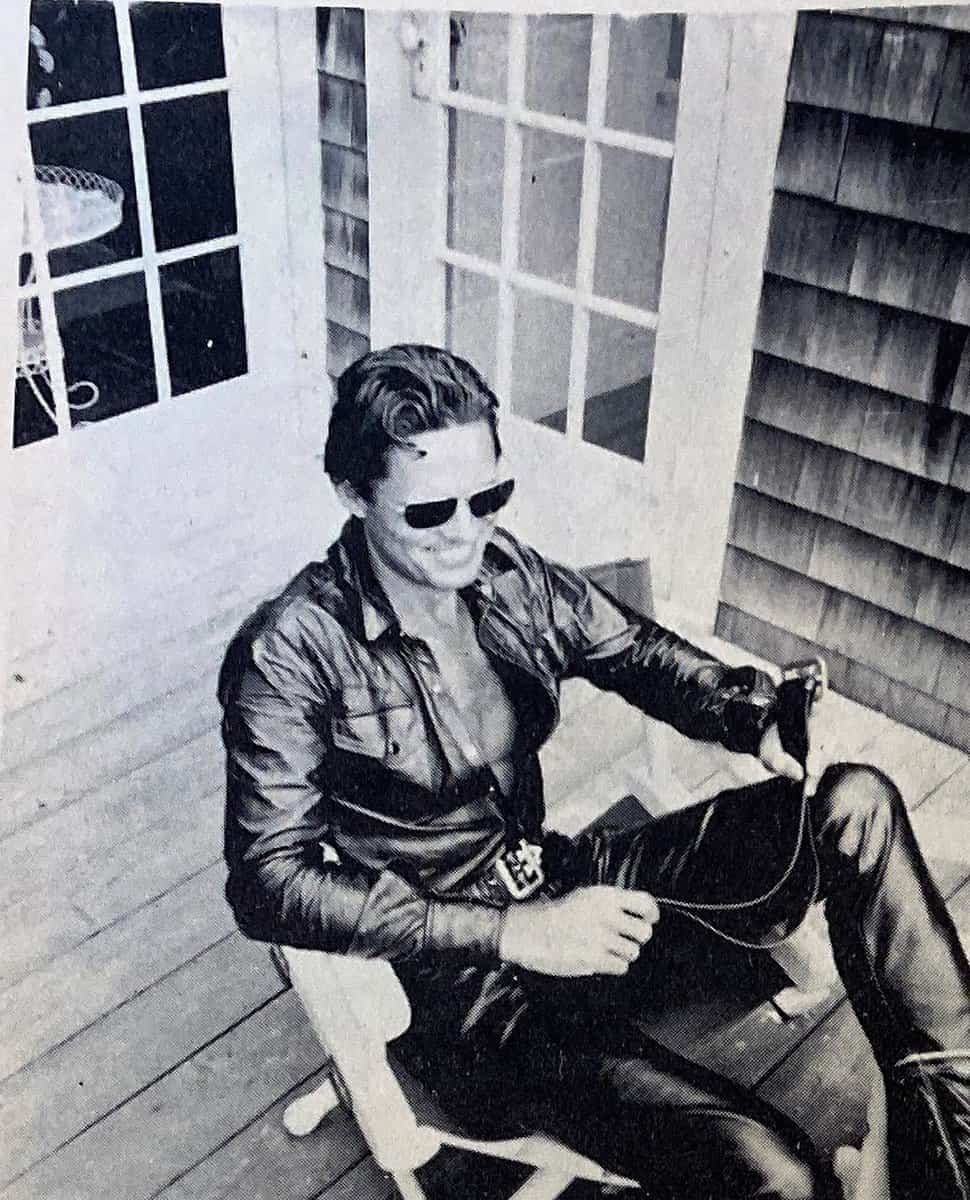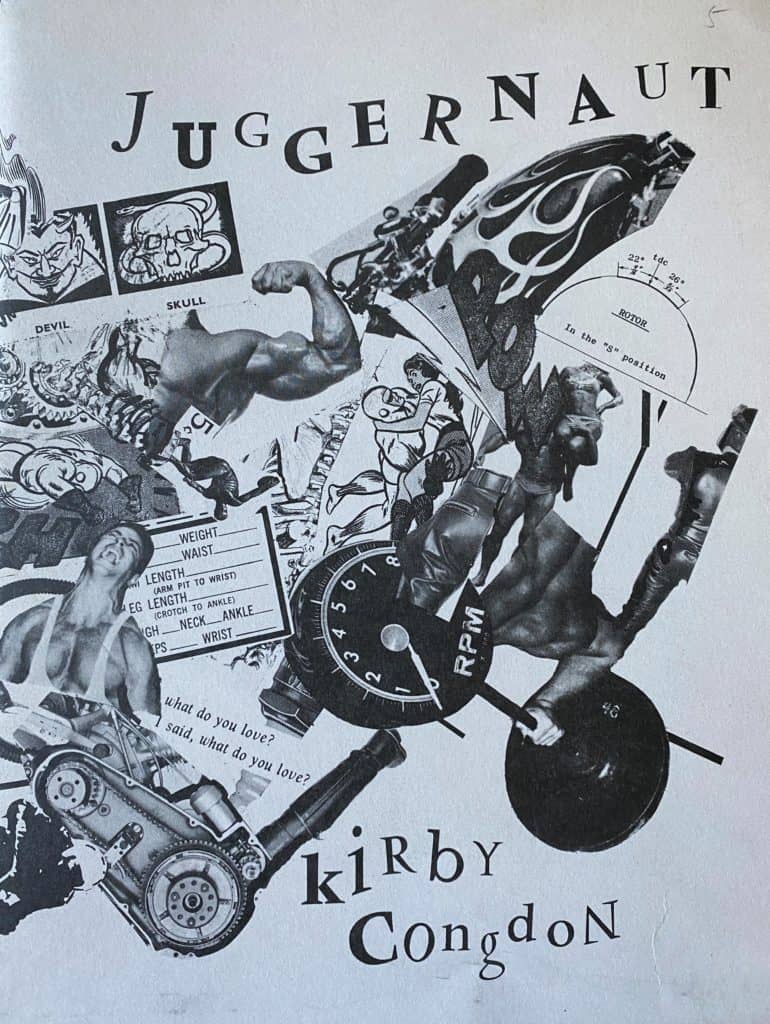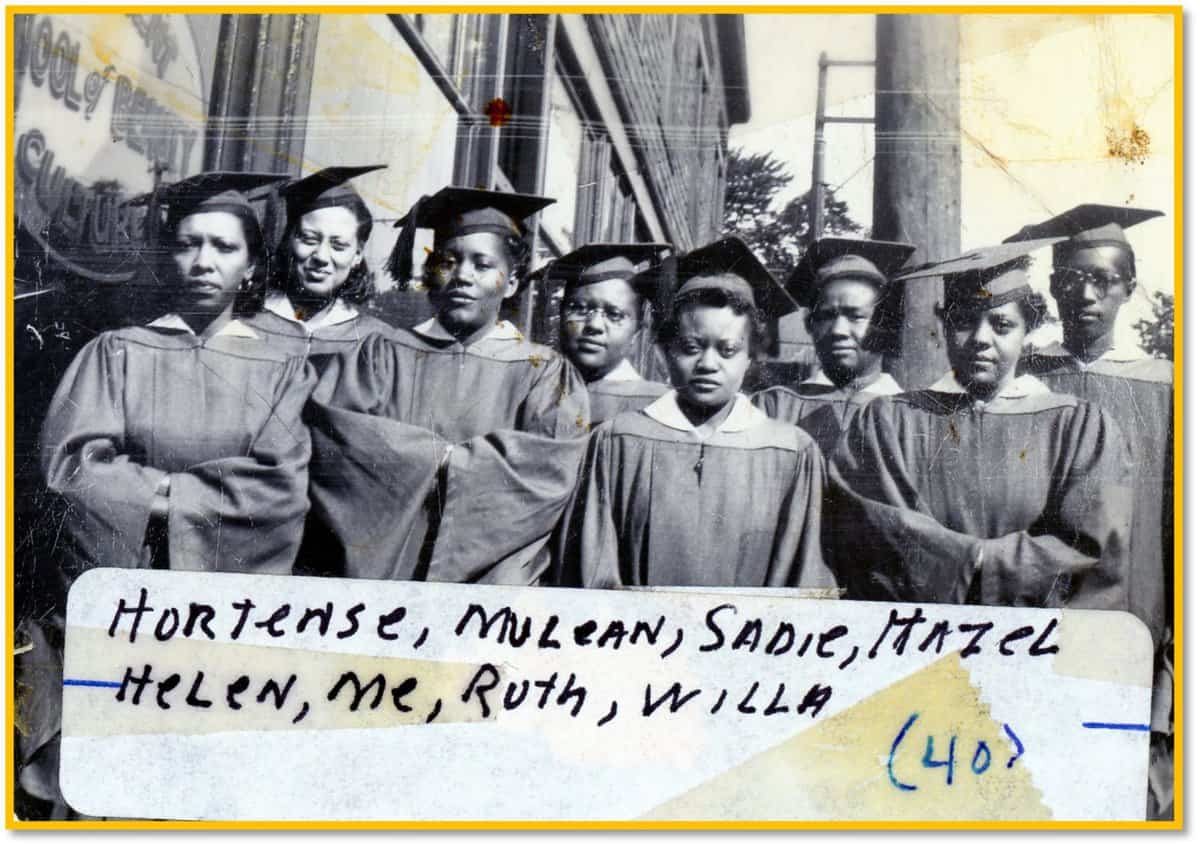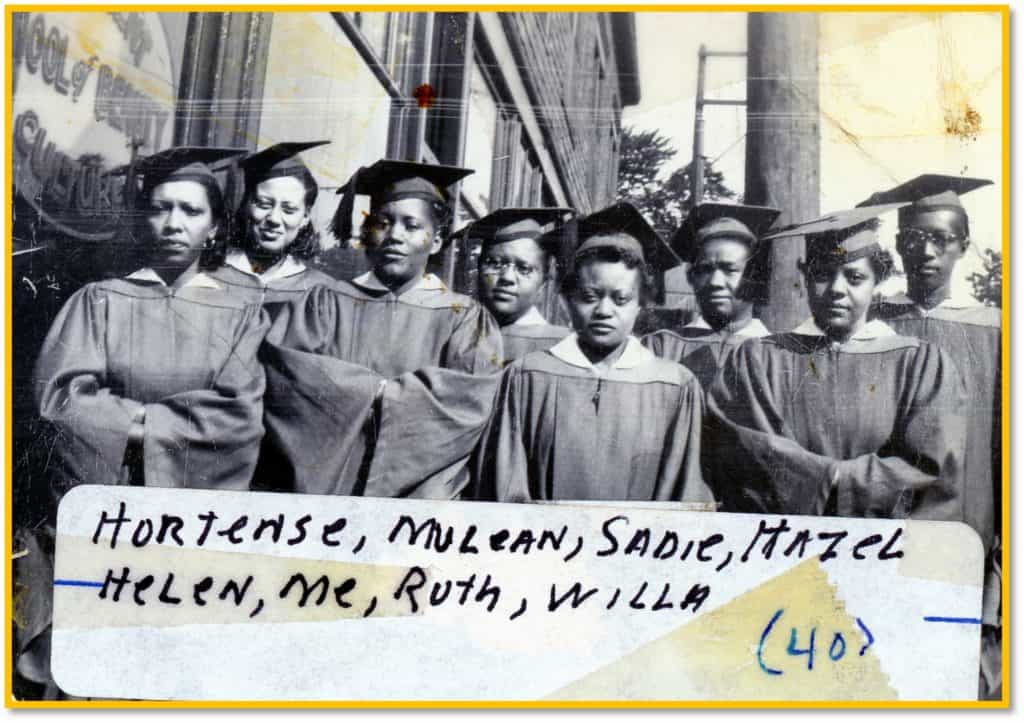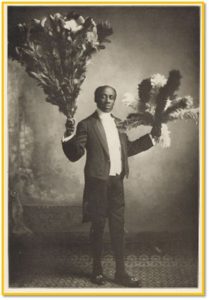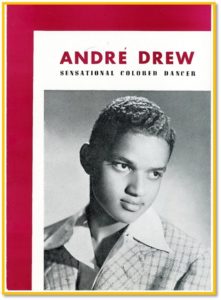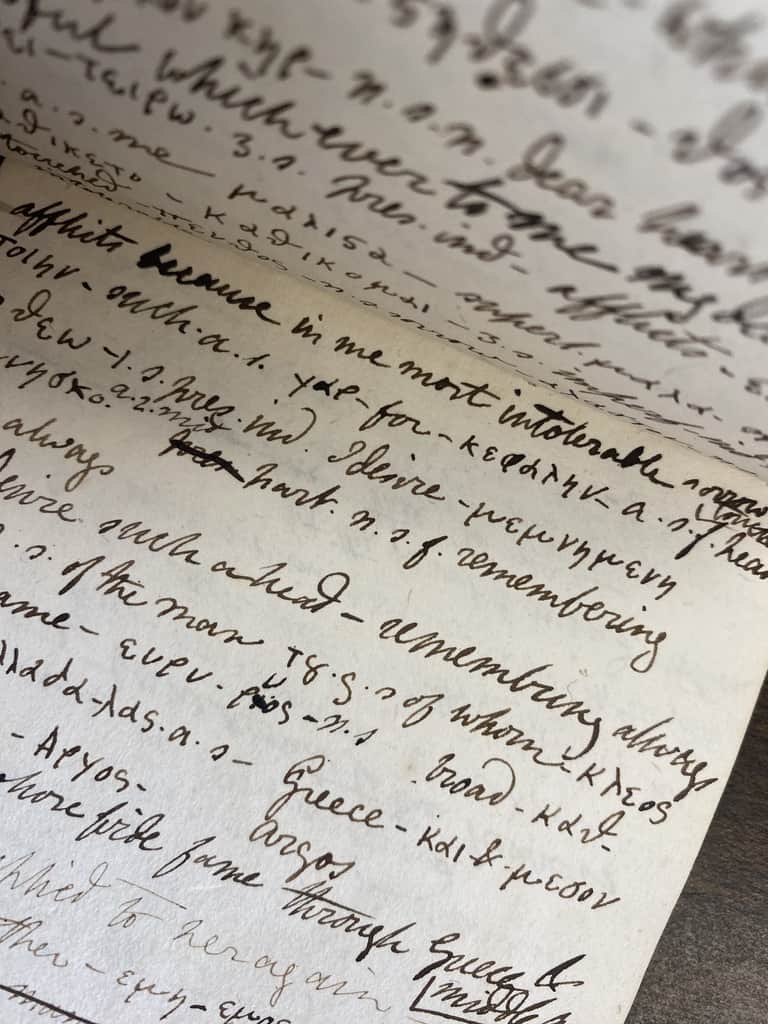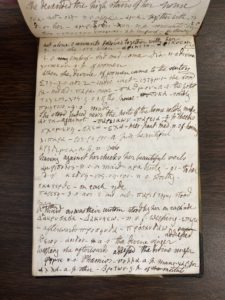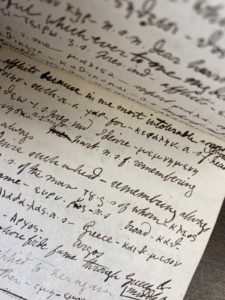The following is written by Academic Outreach Coordinator Kathryn Reuter
On a college campus, chances are high that you will encounter at least one button during the course of your day. Pin back buttons – sometimes called “badges” – have long decorated the tote bags, backpacks, sweaters, and jackets of university students. Buttons proclaim allegiance to a politician, to a band, or to a cause. They can commemorate an event and serve as a handy collectable souvenir.
The pin-back button as we know it today was first patented in 1896 and was manufactured by the Whitehead & Hoag Company, a business based in Newark, New Jersey. While there are earlier surviving examples of slogans and images on wearable medallions and badges (like this 1860 Presidential campaign button for Abraham Lincoln), the 1896 patent included two key innovations: a transparent cover of celluloid to protect the button design and a metal pin on the back to act as a fastener. The essential components of this 1896 design have endured to the present day, although most buttons now have a closed pin in the back to prevent pokes – and the plastic covers are made from mylar, not celluloid. A number of pin-back buttons are tucked away in different archival collections here at the University of Iowa Special Collections and Archives. Representing events and issues from over twelve decades, these buttons speak to the age-old appeal of this simple object.
Before the Button – Some History:
Before the Whitehead & Hoag company began producing pin-back buttons as a standalone product, they used celluloid badges as an element of their popular ribbon badges. An example of a ribbon badge can be seen here in Figure 1.
This ribbon badge is from 1894 and is preserved (along with many other ribbons and buttons) in the John Springer Printing Ephemera Collection. This ribbon was manufactured by Whitehead & Hoag for the 25th Annual Session of the Le Mars, Iowa Knights of Pythias organization. As it predates the 1896 patent, the button has no pin backing but dangles from the ribbon, the whole ensemble designed to be fastened from the gold top onto a lapel.
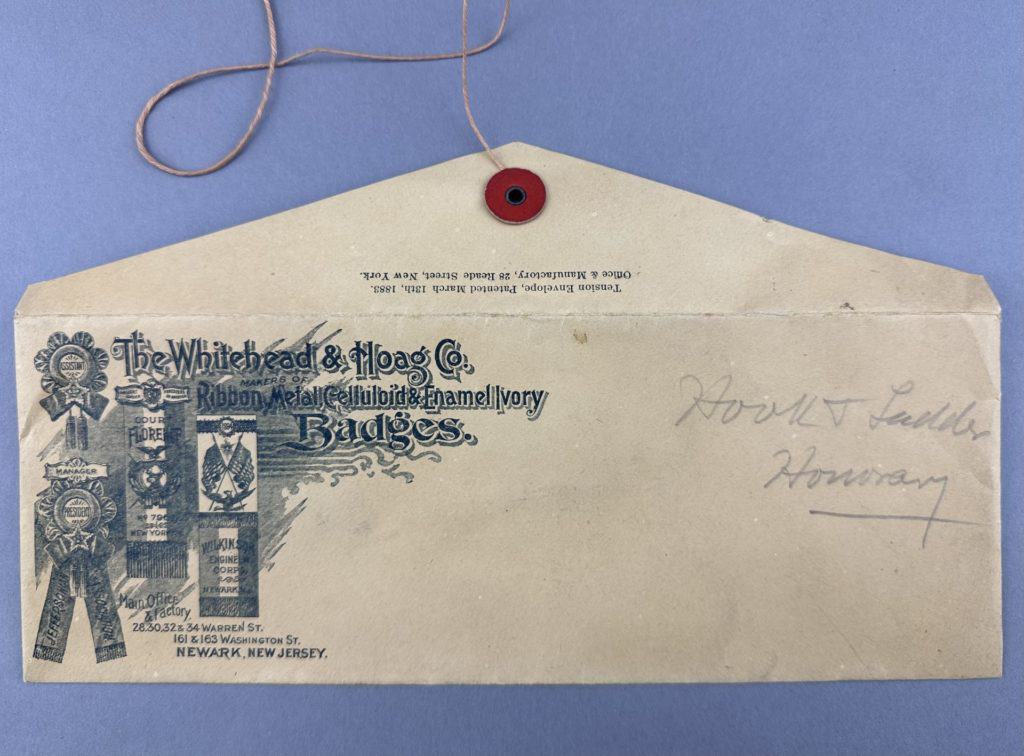
Also in the John Springer Printing Ephemera Collection is an envelope from the Whitehead & Hoag Company. This envelope describes the firm as “Makers of Ribbon, Metal, Celluloid & Enamel Ivory Badges”. The illustration on the envelope shows several ribbon badges, and the reverse of the envelope notes the design for this “Tension Envelope” was patented March 13th, 1883. This envelope is remarkable because it shows the Whitehead & Hoag Company branching out into different materials for their badges, but still primarily selling ribbons.
From Ribbons to Buttons:
In 1896 the pin-back button became a smashing success and quickly outpaced ribbon badges as the main product for the Whitehead & Hoag Company. From the start, people pinned buttons onto their hats and their clothes – and the buttons, well, they stuck! As Christen Carter and Ted Hake, the authors of Button Power: 125 Years of Saying It with Buttons, write: “[Whitehead & Hoag] succeeded in producing a low-cost, wearable, and visually appealing mass-produced novelty.” Not only did the button find fast success with businesses wishing to advertise their products and services, but they were immediately leveraged in political campaigns. Carter and Hake explain: “(the button) …debuted just a few months prior to the 1896 presidential nominating conventions and November’s election day; W&H created over two thousand distinct button designs for (presidential candidates) McKinley and Bryan.” Seen here are a number of campaign buttons from the John Springer Printing Ephemera Collection:
Competing firms soon began producing their own buttons – either by licensing the Whitehead & Hoag patent or by making slight modifications to the design. Another unique piece of button business ephemera in our collections is a price guide and product sample set from the St. Louis Button Co. The advertisement reads:
“SPECIAL DESIGN CELLULOID BUTTONS
With Pin Backs
PRICES IN EFFECT MAY 21st, 1923
Celluloid Buttons with your very own special design in one or more colors can be furnished at very low prices. Send us a description or a sketch of what you want and we will understand your requirements and will be able to arrange your wording and the design so as to please you.”
This advertisement was mailed to the Redpath Lyceum Bureau in 1925 as an appeal to order buttons through the St. Louis Button Company. Now over 100 years old, the sample buttons that were mailed out are still vibrantly colored and very well-preserved.
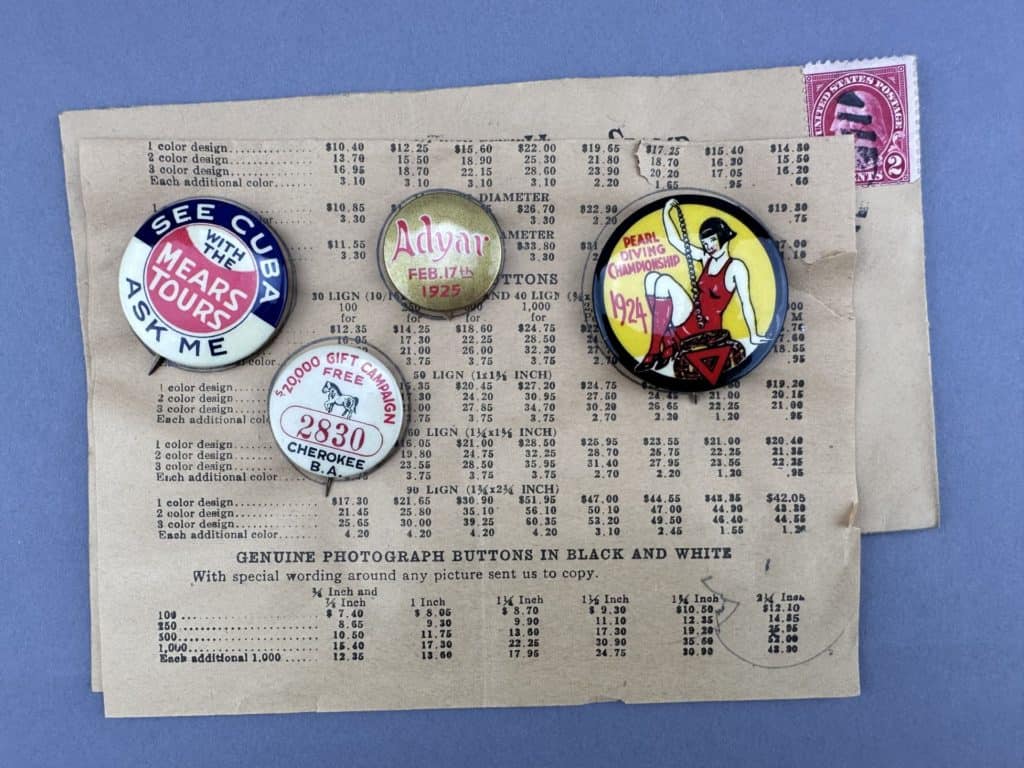
Also in good shape considering its age is this button from the 1898 Trans-Mississippi Exposition in Omaha. The exposition apparently featured an Ostrich Farm!
In addition to serving as campaign materials and souvenirs, buttons became a way to display allegiance to a fandom or to signal your taste in music. In the Lynda Mendoza Collection of David McCallum Memorabilia, there are a number of buttons from the television series The Man from U.N.C.L.E.
And from the same collection is a “Listen to this Button” button (a promotional item for John Lennon’s 1974 album Walls and Bridges) and a “Long Live the Beatles Fan Club” button, which has a manufacturing mark from the Asco Company of Winona, Minnesota.
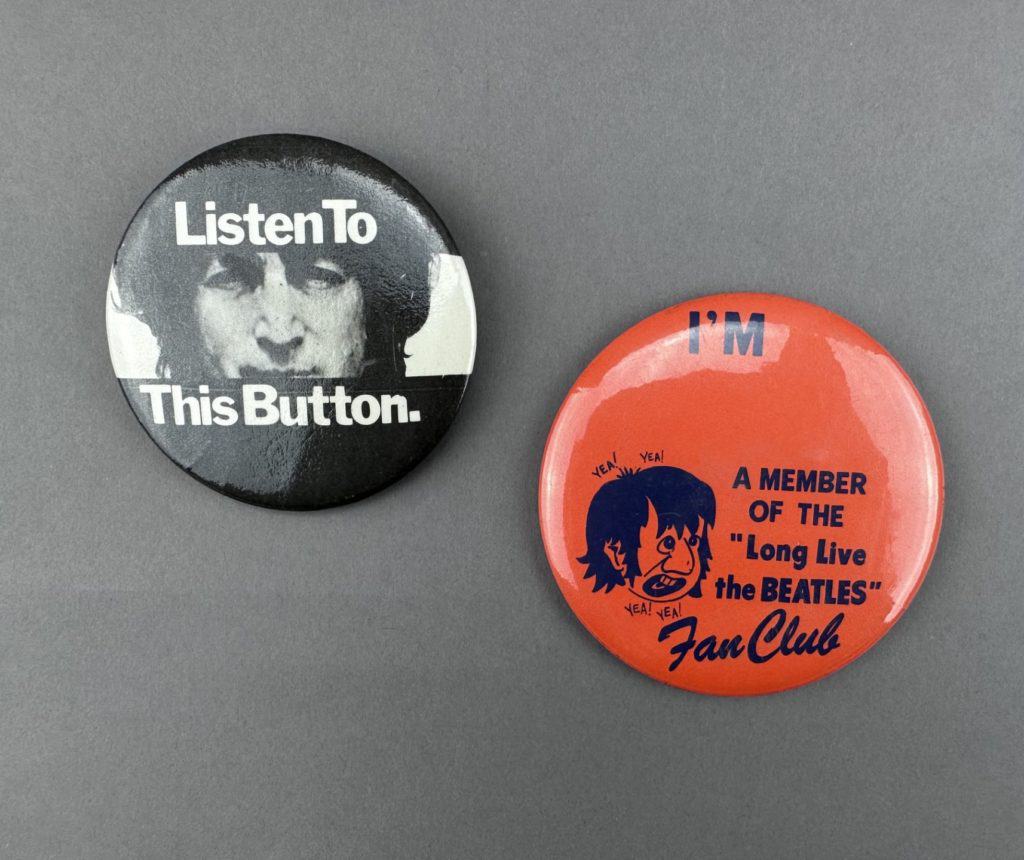
Buttons also appeared across university campuses pledging school spirit – and a number of University of Iowa branded buttons exist in our collections. Seen here is a button from Iowa’s 1930 Homecoming, as preserved by State University of Iowa student Frances Louise Fourt, who pinned it in her scrapbook along with football game ticket stubs.
Today, you can order buttons in bulk through a number of online vendors – or, you can make your own bespoke buttons if you have access to a button maker. Preserved in the Iowa Women’s Archives is the Unbuttoning Feminism collection (IWA 0977), a collection of buttons made by University of Iowa students in the spring of 2013 at button-making workshops at the Women’s Resource and Action Center.
If you enjoyed this look into button history and are inspired to give button making a try, come join Special Collections and Archives and the Art Library in Study Break: Button & Collage Making, a free activity on Monday, October 16th, 2023! The event will be held at the Iowa Memorial Union, First Floor Info Table (by Hubbard Commons) 1:00PM – 3:00PM.
References:
Carter, Christen and Hake, Theodore. Button Power: 125 Years of Saying It with Buttons. New York: Princeton Architectural Press, 2021.
